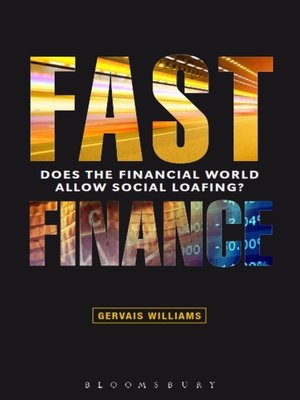
Sign up to save your library
With an OverDrive account, you can save your favorite libraries for at-a-glance information about availability. Find out more about OverDrive accounts.
Find this title in Libby, the library reading app by OverDrive.



Search for a digital library with this title
Title found at these libraries:
| Library Name | Distance |
|---|---|
| Loading... |
Market liquidity is an essential feature of the stock market, so investors and corporates can transact as and when it suits them. A key priority for stock market operators is to ensure there are market participants with a wide range of different perspectives, which offer plentiful trading volumes. Stock exchanges need to encourage investors with shorter-term horizons to lubricate the transaction process; the vitality of shorter-term operators is a key part of the success of the whole.
However, in recent times the proliferation of credit has favoured speculative strategies, and along with new technologies, trading volumes have been driven up by the speed at which data is accessed and put to use. Consequently, market participants optimise their strategies for quick returns and become largely disconnected from, or potentially in conflict with, the wider interests of longer-term investors. This is the 'fast finance' problem.
In this new chapter of Slow Finance, Gervais Williams builds on his previous work to further consider the problems and solutions for today's financial markets. He suggests that the debate, which has focused on the computerised algorithms that instigate rapid automated buy or sell orders at remote exchanges, needs to be extend further and a more forward-looking policy that brings the parallel markets together into one physical location to concentrate market volumes, be implemented.
Based on his extensive industry experience Gervais Williams outlines:







